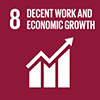Description/achievement of initiative
The City of Yokohama is a large city with 3.7 million inhabitants. Its mountain forests and farmland has decreased year by year due to urban development. To preserve precious green areas for its citizens, the city has introduced a new tax system. The city uses the revenues to conserve privately-owned green areas and their biodiversity and encourage citizens, corporations and developers to take part.
Source: The ICLEI Case Study series
In response to the results of a questionnaire survey with 10,000 citizens, symposiums, public comments, and reports from experts in a one-year study, the Yokohama City Council adopted an ordinance in December 2008 to introduce the Yokohama Greenery Tax in April 2009. To share costs among citizens and corporations, the Yokohama Greenery Tax is added to the residential tax for both. This is expected to bring about 2.4 billion Yen (approx. 29 million US$) per year on average (about 1.6 billion Yen, approx. 19 million US$, from individuals and 0.8 billion Yen, approx. 9.5 million US$, from corporations).
Implementation methodologies
Arrangements for Capacity-Building and Technology Transfer
Coordination mechanisms/governance structure
Partner(s)

